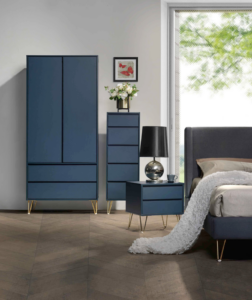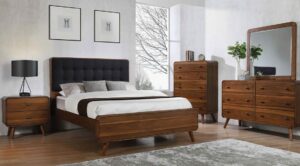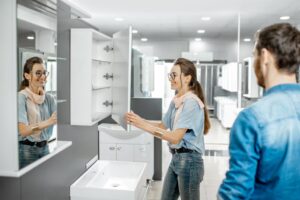On my most recent trip to the store, I was on a mission to find the perfect business casual pants. I picked up everything that fit the bill of what I was looking for, all in the same size. I stood in a short line to try on my selection, but when I finally got into a fitting room, I discovered I had picked up every item in one size too big.
Frustrated at the time I had wasted, I put on my own clothes, gathered up my items, and did the whole process again. I was grumpy and definitely less happy with my shopping experience. If I hadn’t been on a “mission,” I probably would have given up and tried again another day.
But I’m not the only one who shops this way. Internal research conducted by Intel shows that most shoppers enter a fitting room and undress only once. Unless they really love a particular item, they will not go out of their way to find it in different sizes or colors. So, if a shopper enters a fitting room with five items and only three fit, they won’t put in the effort to find the right sizes for the other two items. They will leave the store having purchased only the three that fit on the first try.
As a retailer, the goal is to get the customer to buy all five items. And, if they’re really ambitious, to inspire the customer to buy a few unexpected items as well. So, how do retailers solve this problem and make the shopping experience more delightful and easier for the consumer?
Technology. Specifically, the Interactive Fitting Room. Since 2015, these fitting rooms have popped up in higher end stores, like Ralph Lauren, and offer customers a more delightful shopping experience.
How it works
The essence of the interactive fitting room is the interactive smart mirror. Through RFID technology, the room identifies the items brought into the fitting room and displays them on the smart mirror. Also displayed is a host of product data, including the various sizes and colors available in stock. The mirror then allows the customer to set the lighting in the room, with options from bright daylight to sunset to club lighting. They can even get style inspiration advice, where the mirror suggests items from the store’s inventory that complement the current selections in the room. Completing a look has never been easier.
Computers can’t do it all, though. The mirror allows a customer to request an associate to bring items to the fitting room, in specific sizes or colors. These requests are pushed to an employee version of the application, where employees can respond to customers with text messages. This features makes trying on clothing so much easier, and customers are delighted to find exactly what they’re looking for much, much more easily.
Once a shopper is satisfied, they can send themselves the contents of their fitting room via text message to easily purchase the items they’ve tried on, either in-store or online. The technology streamlines customer convenience and greatly improves shopper satisfaction and, in the end, basket size.
Retailers can use this technology to their advantage
Technology like this gives retailers a way to combine the best of the eCommerce world with the brick-and-mortar world. By creating this integrated omni-channel shopping experience, retailers leverage the convenience of eCommerce and the power of big data. For example, Chow Sang Sang, a jewelry retailer headquartered in Hong Kong, implemented several smart technologies in their retail stores, including the Magic Mirror 2.0. With this, they saw a 100 percent omni-channel sales boost, a common theme for retailers using this technology.
In the long run, interactive mirrors and similar technologies gather invaluable data on customers. This data can give a retailer valuable insight into how specific products are performing or how their customers buy products. For example, fitting rooms can show a retailer how long consumers spend in the fitting room, which items are bought and which are tried but abandoned. This data is invaluable for a retailer managing design decisions and inventory.
Scaling the model
Currently, these fitting room models exist in higher end stores. These stores focus on creating a personalized, delightful customer experience as much as they do on turning inventory. However, Oak Labs, a creator of these interactive mirrors, says that the technology is scalable in price and integration. We may see more of them in mid-level retailers soon enough.
Either way, the lesson for retailers to learn is that fighting the eCommerce trend will do them no good. Rather, they should look to boosting business by integrating omni-channel shopping experiences, bringing the online world into the brick-and-mortar and vice versa. Technologies like Oak Labs, interactive fitting rooms, and even Shoptelligence are helping retailers capitalize on these trends. Visit our site to learn more about how you can bring digital into your world.






